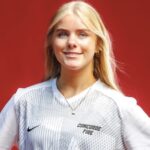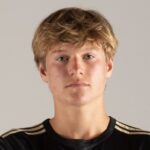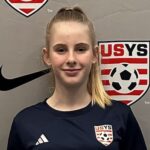From the ground up: The rise of the Portland Timbers youth system
By Liviu Bird
All empires start small, and the Portland Timbers’ youth system is no exception. Since the club established its Major League Soccer-mandated academy in 2012, its growth has been breathtakingly rapid, placing the Timbers in a position to dominate their region’s youth scene.
The club laid roots for the Timbers Academy in Portland’s days in the second-tier United Soccer Leagues, but promotion to MLS in 2009 was the first step in turning a burgeoning program into an Oregonian juggernaut.
Now, the structure includes Under-16 and U-18 U.S. Soccer Development Academy teams — with a U-14 side to be added next year — as well as the state’s Olympic Development Program and five partner clubs in an arrangement called the Timbers Alliance.
Timbers Academy director Mike Smith was the state technical director in charge of ODP before his current role. He set up five Regional Training Centers, still in place today, to allow players to receive high-level training and coaching close to home.
“It was sort of an enhancement of the good job that the local clubs were doing,” Smith said of the initial Regional Training Center concept, a similar version of which is run by the U.S. Soccer Federation on a nationwide basis.
Training centers were set up in Portland, Eugene, Bend and Medford. Eventually, population-dense Portland split into two separate centers.
The Timbers then began to build the Alliance club system in addition to co-opting the training centers around the state. Again, the club built on the system already in place rather than starting from scratch.
“The initial idea was to have an Alliance club partner in each of the markets that we had the Regional Training Centers. We could help that club out, make sure that club was developing coaches and players in the right way, and also then would be able to provide location, fields, some staff coach help to help develop our Regional Training Centers,” Smith said. “It would be a mutually beneficial arrangement.”
The Timbers selected three clubs with which to share resources and cooperate on curriculum development beginning in February 2012: Westside Metros (Beaverton), Eastside United (Gresham) and Vancouver United (Vancouver, Wash.). Rogue Valley SC (Medford) joined three months later.
Under new MLS territory guidelines, the club expanded into southern Washington and took a more active role in the area, setting up a sixth Regional Training Center in Vancouver.
“Previously, under ODP — being the Oregon Olympic Development Program — although we did develop some kids from Washington, we were not really allowed to overtly do anything up there,” Smith said.
The four original Timbers Alliance clubs incorporated the parent club’s name and logo with their existing branding, turning themselves into the Westside Timbers, Eastside Timbers, Vancouver Timbers and Rogue Valley Timbers, respectively. The clubs’ jerseys also feature a Timbers Alliance patch, and all Alliance members wear red and white on the field.
Two Regional Training Center areas did not have a Timbers Alliance club nearby, in Eugene and Bend — until the landscape shifted again in early April.
* * *
Based in the central Oregon town of Bend, Oregon Rush formed in 2007 under the multinational Colorado Rush umbrella. The Colorado Rush established 28 affiliate clubs across the country since 2003, expanding to Asia, Africa and South America in 2009. Each club bears the Rush name and logo.
A tourist destination town of nearly 80,000 residents situated three hours southeast of Portland, Bend is known more for the Deschutes Brewery and Mount Bachelor ski resort than soccer.
However, Oregon Rush won 12 state championships in five years and had 30 players earn spots on college teams. Belying its modest surroundings — soccer fields set amid mountains and lakes — Bend has become something of a soccer hotbed.
On April 8, the Timbers announced that the club would become its fifth Alliance partner effective immediately, rebranding to become the Bend FC Timbers. The club shed its Rush colors, logo and association for new beginnings under the largest club in the state.
“I think everyone enjoyed being an Oregon Rush club, but … we felt like it was just more of an identity within our state than the Colorado Rush club,” said Jen Davin, Bend FC Timbers director of operations.

For the transition to take place, Bend had to cut ties with Colorado. The board of directors made the decision on behalf of the club’s players, coaches and parents after extensive conversations with Timbers officials.
“I didn’t care, to be honest with you, whether they stayed Rush or not,” Smith said. “It didn’t matter to us whatsoever. We wanted an Alliance partner, under any auspices, in that area. That [change] had nothing to do with us whatsoever.”
But if the transition was met happily in Oregon, officials in Colorado had a different reaction.
“We were a little blindsided by it, although generally speaking, the Rush doesn’t micromanage the clubs,” Rush West Region technical director Arian Hoxha said. “It is an unknown to us how these decisions were made. Based on their bylaws, the board of directors is allowed to make decisions on behalf of the membership, so in the end it is that board’s decision to do whatever they feel is necessary to do with their club. But it wasn’t a cooperative process from our perspective.”
Hoxha said a portion of the club is unhappy with the decision and has plans to break off and create a new entity under the Rush, an assertion Davin disputed.
“Our club has stayed whole ever since we made the announcement a couple weeks ago,” Davin told SoccerWire.com. “I haven’t heard of any rogue teams that were going to stay with Rush.”
Hoxha said the Rush would eventually have another club in Oregon, although he was not sure when.
For the Timbers, taking over a club in Bend just marks another step toward a system that leaves no stone unturned to discover the best players. Another, smaller, step came 10 days after the club in Bend defected.
On April 18, the Vancouver (Wash.) Timbers expanded by merging with the Camas-Washougal Soccer Club and changing its name to the Washington Timbers. The merger has been in the works for nearly a decade, general manager Eli Ulvi said.
 “I proposed [the name change], basically, to be more of an all-encompassing name to enable families in Camas, Washougal, Vancouver and really any other southern Washington communities that are involved in the club to feel a part of the club and a part of what we’re doing,” Ulvi said. “It’s definitely an opportunity for this club to grow a ton and to grow professionally, in a measured manner.”
“I proposed [the name change], basically, to be more of an all-encompassing name to enable families in Camas, Washougal, Vancouver and really any other southern Washington communities that are involved in the club to feel a part of the club and a part of what we’re doing,” Ulvi said. “It’s definitely an opportunity for this club to grow a ton and to grow professionally, in a measured manner.”
The two clubs each had two directors of coaching, who now have similar roles with the Washington Timbers. Ulvi’s job as general manager is to oversee the entire club’s day-to-day financial and technical operations, as well as act as a liaison between the board of directors and technical directors.
“It’s just a very exciting opportunity, being in the greater Portland-Vancouver metro area,” Ulvi said. “It’s such an energetic, vibrant soccer community, with the Timbers [MLS club] being the pinnacle of that community.”
The Timbers Alliance club in Vancouver, a region previously off-limits to the Timbers under the old ODP system because of its location north of the Columbia River (the Washington-Oregon state line), is now the largest club in the Alliance in terms of staff.
South-central Oregon remains the only area with a Regional Training Center but no Alliance club.
“We’re currently looking at the potential possibility of adding a sixth one in Eugene or Salem,” Smith said. “There are ongoing discussions with the clubs in those areas.”
* * *
None of the aspects of the Timbers Alliance partnerships are more potentially beneficial to players than the ability to become part of the Timbers Academy teams.
The level of competition naturally increases with more players to choose from, because it allows staff to “have a look at some of [the Alliance clubs’] upcoming kids in competition, so we can have a good idea if the best players are coming through,” Smith said.
As a result, a handful of players have found a home on the U-16 and U-18 Timbers teams. The younger group boasts eight players from outside of the greater Portland area on its 2012-13 roster, while the older group has nine.
“We had said all along that we would provide some dispensation for those kids because they have to travel quite a ways,” Smith said.
A couple of players have arrangements with their high schools that allow them to stay in Portland in midweek, training on Tuesday night, missing class on Wednesday to train again and driving home that evening.
“Their high schools have been fantastic to work with their families,” Smith said. “They don’t have to actually physically go to the school on Wednesday; they have that arranged with their principals and high-school counselors and teachers.”
The Timbers Academy players are the fruits of an extensive pyramid that reaches from the recreational level, to Alliance clubs, to the Academy, to the U-23 team in the Premier Development League and finally to the first team in MLS.
The only drawback is that Alliance players are off-limits for Homegrown Player signings, so if a player slips through the net, other clubs would have the opportunity to sign him.
“The Alliance agreements and partnerships do a number of great things for us, but getting players onto the Homegrown list is not one of them,” Smith said. “So should someone decide to just play at an Alliance club, yes, they have a good relationship with us, but it’s not necessarily going to be recognized by MLS.”
Players must compete in a combination of 80 training sessions and matches each year with an Academy team — then 30 times with the club while in college, which is where fielding a PDL team comes in handy — to be eligible for Homegrown signings, Smith said, making it apparent that the process is much more complicated than the one paragraph reserved for it in the MLS roster rules:
“A club may sign a player to his first professional contract without subjecting him to the MLS SuperDraft if the player has trained for at least one year in the club’s youth development program and has met the League’s Homegrown Player criteria. Players joining MLS through this mechanism are known as Homegrown Players. There is no limit to the number of Homegrown Players a club may sign in a given year.”
MLS granted Portland two notable exceptions: Brent Richards and Steven Evans. Both of them finished youth soccer before a Timbers Academy existed, but they played for Eastside United.
Eastside was the Timbers’ feeder club when it was in the USL, and Portland general manager Gavin Wilkinson was Eastside’s technical director. Richards and Evans played for the Timbers U23s in the PDL, under Eastside director of coaching and Timbers U23s head coach Jim Rilatt.
“The rules have gradually changed, and those two were … grandfathered in, but now, MLS has come up with more specificity to the Homegrown rules and regulations,” Smith said.
Jake Gleeson, signed in 2011, and 2013 MLS SuperDraft pick Dylan Tucker-Gangnes also played for the U-23 team before joining the first team, although they did not play for any Timbers youth team.
The extensive Timbers structure has paid off with those four players currently on the first team roster and a number of Academy players training and playing matches in the MLS Reserve League at any opportunity.
 “It’s a tremendous pyramid we have within the top level of soccer here in Oregon,” Smith said. “We basically would love to have everybody on the same page and under the same umbrella.”
“It’s a tremendous pyramid we have within the top level of soccer here in Oregon,” Smith said. “We basically would love to have everybody on the same page and under the same umbrella.”
The ultimate goal, Smith said, is to keep people in the game — and allied to the Timbers — as long as possible, at whatever level they choose to be involved.
“We would like to create elite players through this pyramid, but … the idea is that if we can help them be soccer fans and come to games and enjoy the experience, then hopefully they’ll keep playing,” Smith said. “We’re just trying to instill passion and enjoyment of the game.”
And ensure first pick of Oregon’s talent for the Timbers.













